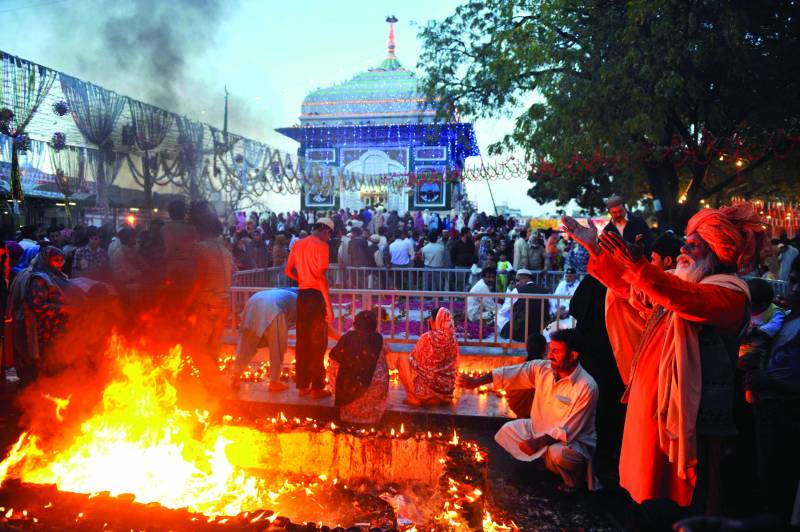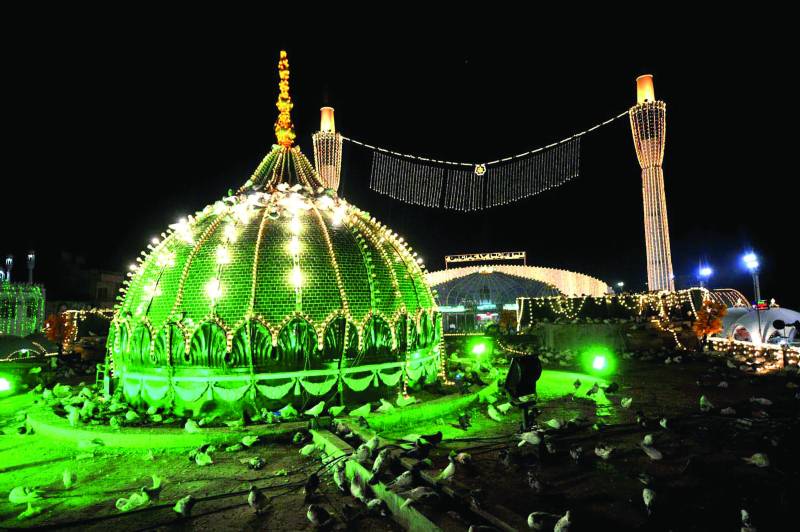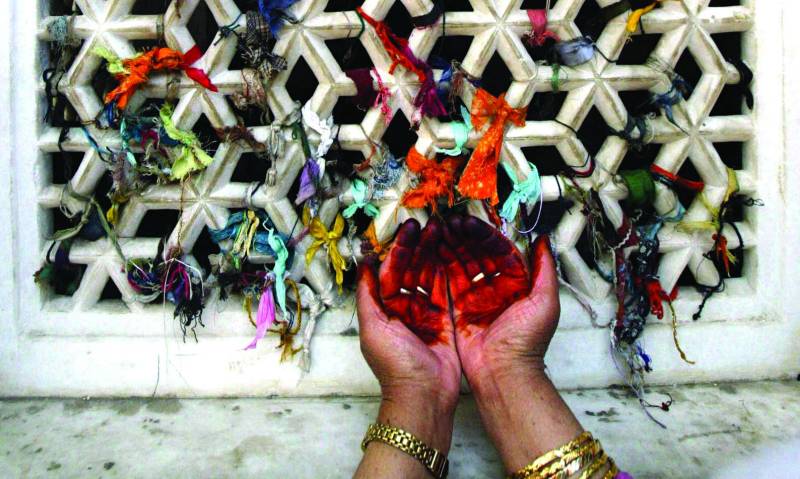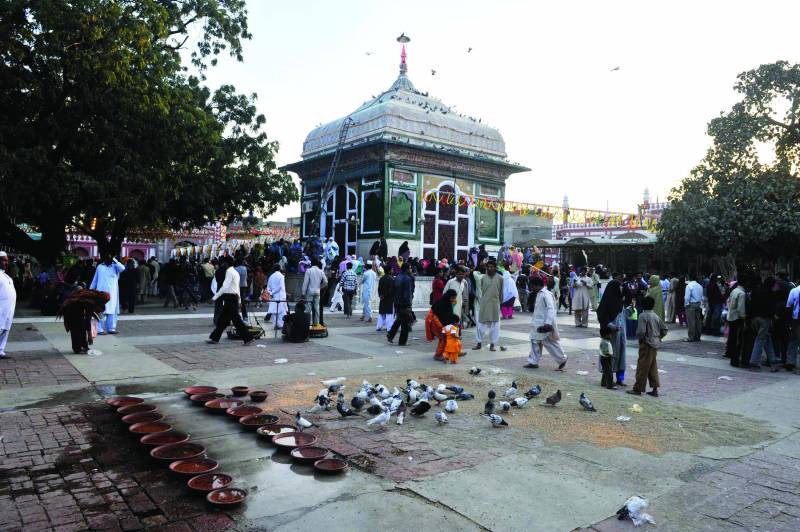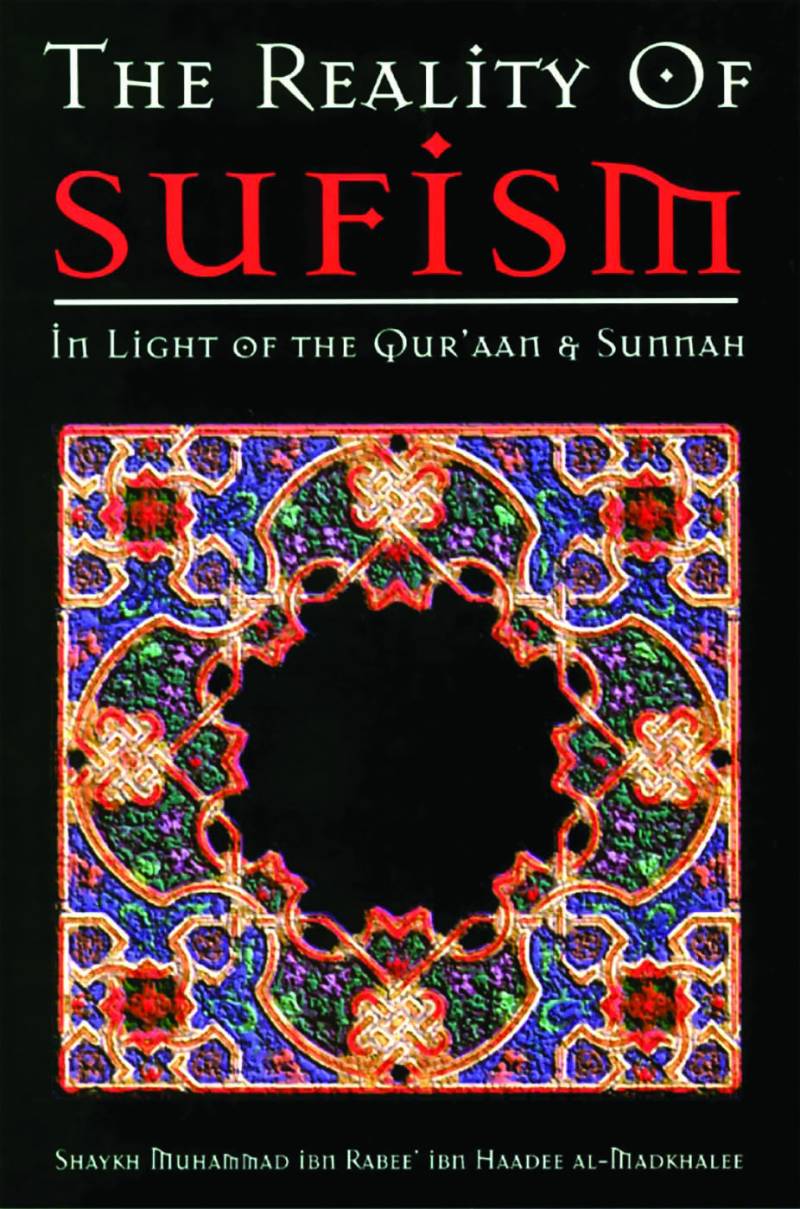Everyone has their own way of connecting with God; same isthe case with the Sufi’s.
Many people do not know who Sufis are and what role they played in spreading Islam in the Indian sub-continent. It is thought that the word ‘Sufi’ is derived from the Arabic words “safa” meaning pure and “suf” also means wool, however symbolically the terms signifies a woolen cloak that the practitioners of Sufism used to wear, which covered their purity and they were very kind and soft hearted like the texture of the cloak.
Their words transmitted to us through ages in their poetry (kalam) called “Kafi, have a hidden meaning to everything they say and that meaning is generally not understood by common people. Sufism is a level that needs dedication and commitment to the path of spirituality and oneness of the Devineto be reach.
Anotherexplanation that we find is that Sufis existed during the time of Prophet Muhammad PBUH also and they were called Ahlaṣ-ṣuffah ("the people of the bench,”) all they did was dhiker and ibadah (remember Allah and prayers. So the concept of Sufism exists from the time Islam was being spread by the Prophet PBUH.
Sufism is considered to be the mystical form of Islam and it builds a very different kind of link between people and the Devine. Purity, truth, selflessness, love and devotion to the creator are the essential ingredients to acquire the status of a Sufi. One who reaches that stage does not care about worldly things ends up living a very peaceful life. Many such Sufis have passed through the world and their message or love, peace and unity continues to touchhearts and souls even today.
The Subcontinent is well known for therich contributions and teachings of the Sufis from the early years of the Hira, KhwajaMoeenuddin Chishti of Ajmer is known for heading the Islamic spiritual movement in India. Among his disciples was KhwajaQutbuddinBakhtiar Khaki, QutbMinarin Dehliwas named after him by Qutabud Din Aibak the Ruler of India. ShaykhHameeduddinNaguri was known for his faith in Wahdat al-Wajud (Unity of Being) and Baba Fareed ud Din GanjShakar is famous for his piety and feeding the ppor and destitute. Along with them we have Shah Innayat Hussain, Madhu– LalHussain, Mian Meer, Shah Jamal, Shah KamalChisti and many others who all have a very special status among the people of both Pakistan and India.
Pakistan and Sufism cannot be separated as all the Sufis have played a major role in bridging the vast differences between the two main religions in the region. Theyare respected, followed by many people who have different beliefs. Over all these years people not only have acknowledged their services to Islam, but also for teaching what Islam is about. People have been following their footsteps, became disciples, and some even gave up their luxurious lives to serve thecause of the Sufis after their deaths. Shrines stand over the graves of the Sufis to acknowledge and honor them for their contribution to the way of life of the people.
Each shrine till this day holds history of many thousands of years within its walls, all you need to do is to search for it and decode it. Their poetry is embossed on walls and on graves, which speaks volumes of that what they preached and followed. At the shrine of Baba Bulleh Shah in Kasur you can see devotees gaze in awe at his turban, cloak and aiktara (a one stringed musical instrument) on display there. At the shrine of Madhu– LalHussian you can see the imprint of the foot print of the Prophet PBUH feet.
These buildings have their own charm. Mughal architecture and Islamic art can be seen extensivelyand a number of these places and the Mosques adjescent to the Mazar’s (shrines) have multi-colored Multani mirror work on the ceiling of the domes. The names of Allah and Prophet Muhammad PBUH are written in different colors along with ayats from the Quran. One can easily tell how delicate the work is and how much effort was put in to decorate the shrines of these Faqeers of Allah.
Some things that these mazars have in common and cannot be missed are that there usually is a big tree in the courtyard near the grave;it seemsthat the tree has a strong bond with the saint buried in the grave. Pigeons are always seen to be flying around in the ground and many people will be feeding them too. Then there will invariably be notice saying that women are not allowed inside the burial chamber. Oil lamps are sold near the mazars with oil and wick of twisted wool wick to be lit by those who want their wishes to be fulfilled, or have had their wishes granted. People will be distributing food (known as langer or degh) amongst the poor; this is usually done once their wish has been granted by Allah. You will also see strings, locks, and glass bagles tied to the lattice of the mazar, or tied to a tree in the vicinity, of the Mazaar. All these are symbols of a ‘maanat,’ (supplication and wish) and is mostly seen being done by ladies.
For many people these places not only hold spiritual value but also serve as a direct link between God and them. Even for health issues they pray at these mazaars to ask Allah to give them health and asking the Saint or Sufi to act as an interceder between them and Allah, and many end up feeling better.
This is all a matter of belief, no science or education can either explain this phenomenon nor can it bring one to this level of oneness and acceptance of divine will, and being “razibaraza” (in agreement with Devine will). This perhaps is the reason for these Sufis and Saints to be alive even long after their death. And the words of Bulleh Shah, “Bulleh Shah Assan Marnanahi, Gore paiya koi Hore,” take on a special significance that transcends belief and disbelief.

